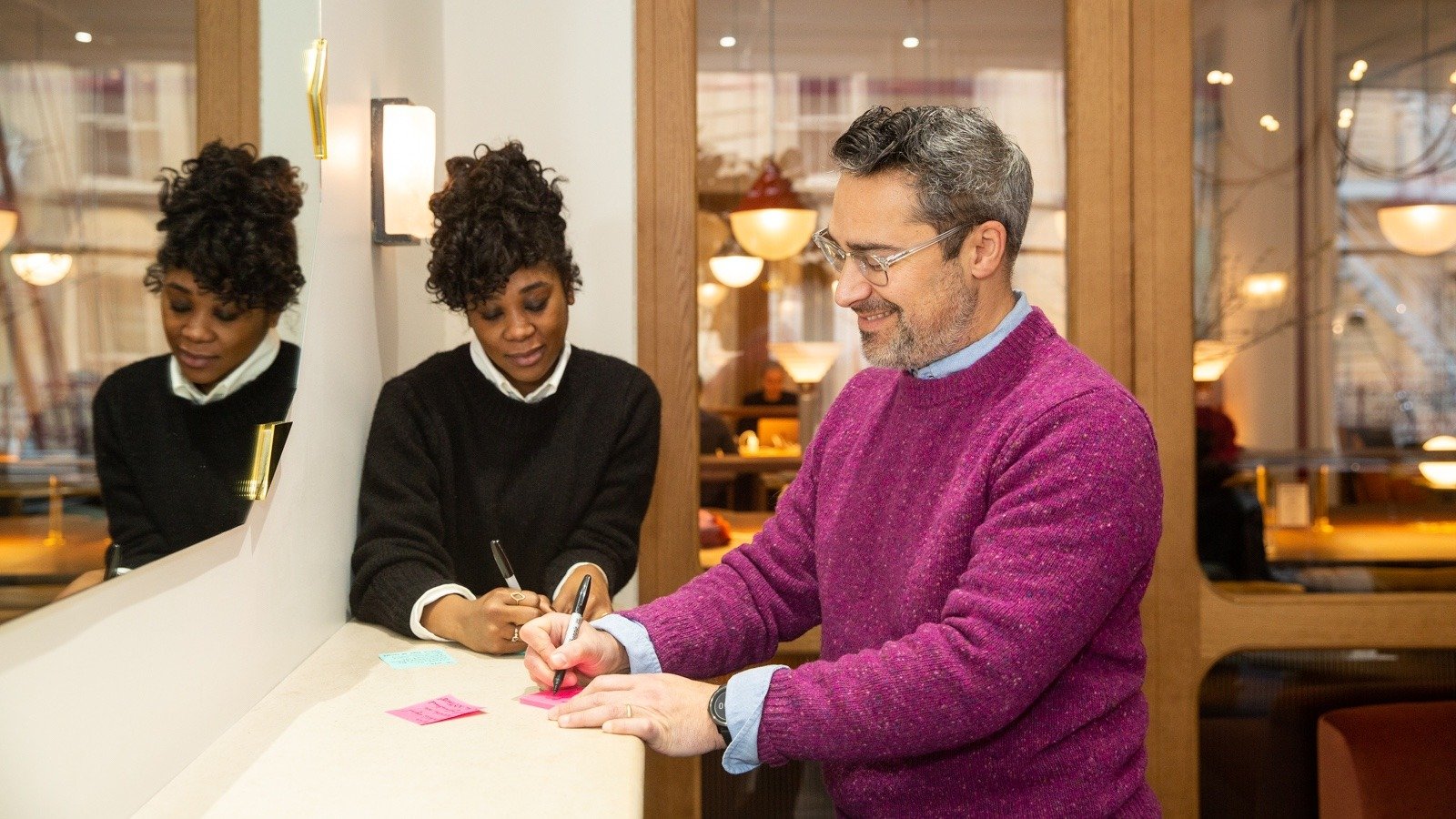Published October 6, 2022 | Updated March 22, 2024 | 5 minute read
7 ways to open meetings with intention, efficiency, and style
A good meeting requires a good check-in.
By “good check-in,” I mean a check-in that isn’t simply done by rote, but thoughtfully crafted to suit the needs of this particular meeting.
That’s not to say it needs to be long, intense, or arduous to plan. But it does require intentional design.
Personally, I see check-ins as an art form, and I love the creative challenge of designing and facilitating them.
As an aficionado of the craft, here are my 7 qualifications for a great check-in.
1. Encourage Vulnerability.
Your check-in should invite personal sharing, without overdoing it.
The goal is to prompt people to share something intriguing that perks up ears around the room, while still being appropriate for that setting.
What’s on your mind today? What are you bringing with you into this moment?
What is something that used to scare you, but no longer does
When was the last time you were wrong? What did you do when you realized it?
2. Connect to the day’s topic and activity.
As my friend Peg Keiner advises, whatever you want people to do in the meeting, have them do it during the check-in.
Writing? Have them write. Talking? Have them talk. Brainstorming? Have them ideate.
Moreover, a great prompt serves as a mental warm-up for the main meeting topic.
For example, in a weekly team demo, try a light but expansive what-if, like:
If you could instantly become fluent in any language, which one would it be?
In an advanced workshop on implicit bias, use a self-reflective prompt, such as:
What challenges have been in the way of your understanding of Whiteness in America?
Or try something simpler for newcomers to anti-bias work, like:
Where was your primary caregiver born?
Going into a post-mortem on a failed project, try something constructive and unifying, eg.:
Look at the values of our team/organization, what is one value you want to hold during our conversation today?
3. Consider Logistics.
A good prompt suits the practical conditions of the meeting, including duration and number of participants.
You may only be able to afford a few seconds per person – but that’s fine! Give constraints, such as:
In just one word or phrase, what weather pattern do you feel like today?
In 20 seconds, describe what you love about where you live.
On a scale of 1 to 10, how present do you feel right now?
By show of hands, how much rest/work/play time did you get this weekend?
A short prompt can still be powerful, if designed with intention and care.
And trust me, people will thank you for being mindful of the time!
4. Acknowledge the Social Setting.
Your check-in should be tailored to the emotional, cultural and political dynamics of the room.
For example, if you’re running an intensive sprint team and you meet multiple times per week, mix it up! Keep your check-ins light some days, and go deep other days. Over time, your thoughtful variety of prompts will help build trust, engagement and camaraderie.
If the company recently announced a hiring freeze, your meeting participants might be distracted and distressed. A good check-in would acknowledge this reality and perhaps invite them to process or share their thoughts.
And this probably goes without saying, but if the CEO and top leadership are in the room, it might not be the best time to go around the circle and have everyone describe themselves as a cat.
If it’s an informal meeting of well-bonded colleagues, have at it! (I’m an orange and black calico all the way.) 😺
5. Acknowledge World Events
Sometimes you have to abandon the plan entirely in order to address what’s happening in the world.
When George Floyd was killed, I knew immediately that I would have to remake the entire plan for an 8-hour racial equity workshop I was slated to lead two days later. Such an event required recognition, acknowledgement, and facilitated emotional processing – especially given that the theme of the workshop.
When you’re leading a meeting directly after a traumatic global event, my best advice is to ask a deep version of, “How are you, really?"
How have you been caring for yourself during this tough time?
What does it feel like to be you lately?
As time goes on, you can use check-ins to acknowledge the event’s broader significance:
If racism didn’t exist, what else would you do with your work?
What does activism look like for you?
6. Keep It Relatable.
Read the room. Choose a check-in that makes sense to this particular group.
One time I asked a group of 16-year-olds in Chicago:
If you could have any superpower, what would you pick?
I was met with blank stares. Why? I had failed to read the room.
This was a group of young Black men who had lived through some extremely difficult experiences. A frivolous question about superpowers just didn’t resonate.
They were more interested in practical, experience-based questions like:
What are you going to do this weekend?
If you had $100 right now, what would you buy?
Make sure to choose language and concepts that resonate with these participants in this session.
7. Prepare To Be Derailed.
A deep, genuine check-in can sometimes lead to derailing conversations that can’t be stopped without severe breakage of trust.
Share a time you had a breakthrough moment understanding race in America.
When was the last time you cried?
These are big questions. Are you prepared for where they might lead?
That’s not to say you should avoid them! But pose these prompts only when you have adequate time and flexibility to process the answers.
Summary: Every meeting needs a check-in.
A meeting isn’t all that useful without the voices and perspectives of everyone there.
A well-designed check-in helps ensure that each mind, heart and voice in the room is activated and participating – creating a safe environment for them to make their best contribution.
No matter the time constraints, group size, format, or goal of the meeting, you can design a thoughtful, appropriate check-in.
Your meetings will be more productive, efficient and satisfying because of it!


.jpg)






